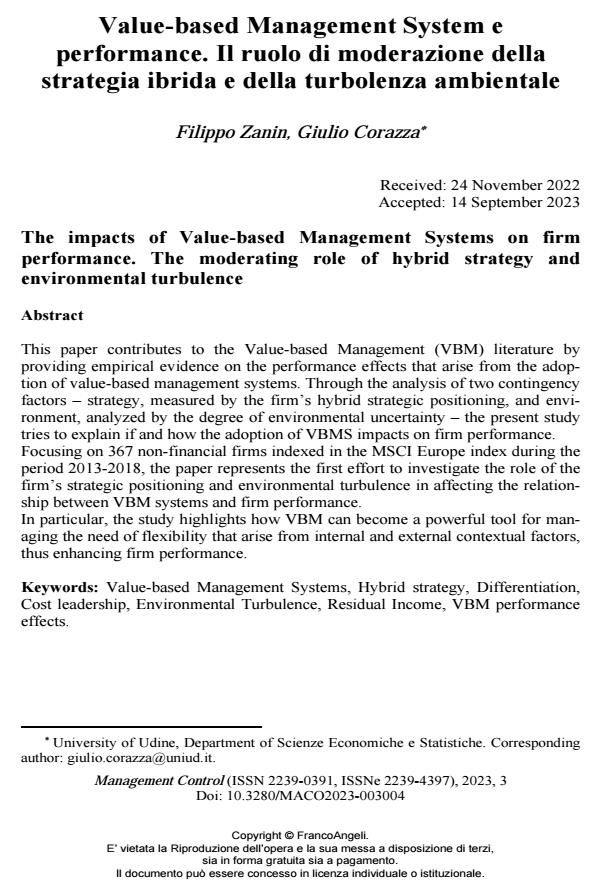The impacts of Value-based Management Systems on firm performance. The moderating role of hybrid strategy and environmental turbulence
Journal title MANAGEMENT CONTROL
Author/s Filippo Zanin, Giulio Corazza
Publishing Year 2024 Issue 2023/3
Language Italian Pages 25 P. 63-87 File size 283 KB
DOI 10.3280/MACO2023-003004
DOI is like a bar code for intellectual property: to have more infomation
click here
Below, you can see the article first page
If you want to buy this article in PDF format, you can do it, following the instructions to buy download credits

FrancoAngeli is member of Publishers International Linking Association, Inc (PILA), a not-for-profit association which run the CrossRef service enabling links to and from online scholarly content.
This paper contributes to the Value-based Management (VBM) literature by providing empirical evidence on the performance effects that arise from the adop-tion of value-based management systems. Through the analysis of two contingen-cy factors – strategy, measured by the firm’s hybrid strategic positioning, and envi-ronment, analyzed by the degree of environmental uncertainty – the present study tries to explain if and how the adoption of VBMS impacts on firm performance. Focusing on 367 non-financial firms indexed in the MSCI Europe index during the period 2013-2018, the paper represents the first effort to investigate the role of the firm’s strategic positioning and environmental turbulence in affecting the relation-ship between VBM systems and firm performance. In particular, the study highlights how VBM can become a powerful tool for man-aging the need of flexibility that arise from internal and external contextual fac-tors, thus enhancing firm performance.
Keywords: Value-based Management Systems, Hybrid strategy, Differentiation, Cost leadership, Environmental Turbulence, Residual Income, VBM performance effects.
Filippo Zanin, Giulio Corazza, Value-based Management System e performance. Il ruolo di moderazione della strategia ibrida e della turbolenza ambientale in "MANAGEMENT CONTROL" 3/2023, pp 63-87, DOI: 10.3280/MACO2023-003004